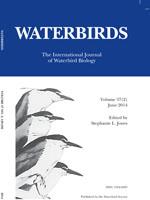To better understand how time of day and light level affect foraging patterns and feeding success in a primarily nocturnal wading bird, observations were made on Black-crowned Night-Herons (Nyticorox nycticorax) at an artificial weir located in the Little Arkansas River in Wichita, Kansas. Numbers of foraging birds at the weir were recorded using intervals of 1-hr periods during both day and nighttime. Strike rates, capture rates, relocation rates, prey sizes, and rates of aggression were compared. A similar number of Black-crowned Night-Herons used this site during the day and at night. Also mean strike rates, capture rates, and relocation rates did not differ between day and night. However, focal birds captured significantly larger fish during the day, when they also experienced higher rates of intra- and interspecific aggression. Since basic foraging patterns did not differ by time of day, it is likely that differences in the behavior, detection, and availability of prey account for the capture of larger fish during the day than at night. Diurnal foraging activity by Black-crowned Night-Herons appears to be important in meeting increased energy demands during the breeding season.
How to translate text using browser tools
1 June 2014
Diurnal and Nocturnal Foraging Activity by Black-crowned Night-Herons (Nycticorax nycticorax) At an Artificial Weir
Alan D. Maccarone,
Bayleigh L. Hamilton
ACCESS THE FULL ARTICLE

Waterbirds
Vol. 37 • No. 2
June 2014
Vol. 37 • No. 2
June 2014
Black-crowned Night-Heron
foraging behavior
nocturnal
Nycticorax nycticorax.




